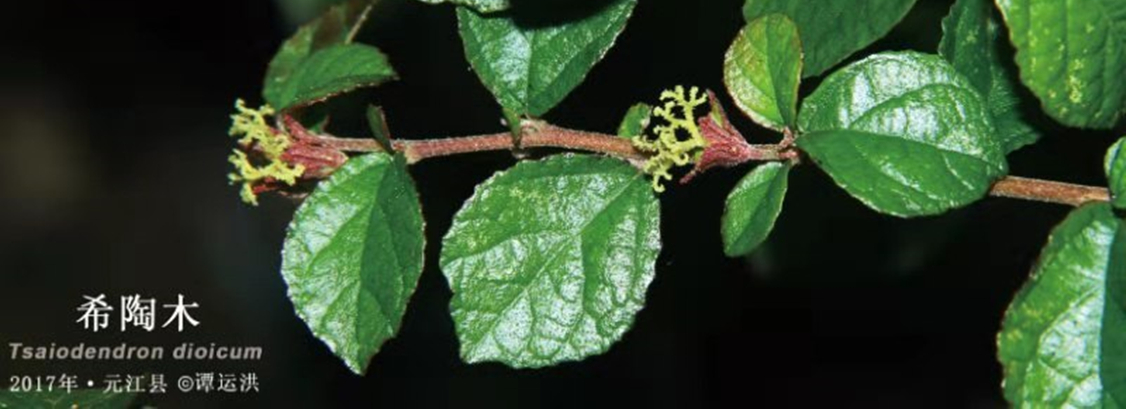Chinese Union of Botanical Gardens officially inaugurated
The Chinese Union of Botanical Gardens (CUBG) was officially launched on June 6 in Beijing. 48 botanical gardens or arboreta have joined in the Union. The objectives of the CUBG are to construct a platform for botanical gardens and arboreta to have strategic cooperation, conduct technical exchanges, and share information.
“Beautiful China is an objective of national ecological civilization. The construction of botanical gardens is an important part in ecological progress. The construction of CUBG should center on the main policies of national economic and social development and strive for efficiency. The feasible and sustainable development of CUBG will enable all botanical gardens and arboreta to make progress in their work”, said Academician BAI Chunli, president of the Chinese Academy of Sciences.
According to Dr. CHEN Jin, director of XTBG, who’s also chairman of the CUBG, there are more than 200 botanical gardens and arboreta in China. However, only 66% of native plant species, 34% endangered plant species have been protected there. There is an imbalance in the protection of plant species of genetic diversity and different provenance. Meanwhile, there is a lack in top-level design and cooperation mechanism for plant species conservation among botanical gardens.
The CUBG proposed a protection program for native plant species of the whole nation, which is aimed at increasing the protection rate of native species to 8o%, and endangered species to 70% in 5 years. Meanwhile, it will increase the preservation of duplicates of some plant species and genetic diversity
The Chinese Union of Botanical Gardens (CUBG) is jointly sponsored by Chinese Academy of Sciences (CAS), State Forestry Administration, and Ministry of Housing and Urban-Rural Development.
![]()

Unveiling ceremony of Chinese Union of Botanical Gardens

CAS President Bai Chunli speaking at the inauguration ceremony
![]()

Dr. Chen Jin speaking at the ceremony
![]()

Leaders from CAS and other ministries present at the ceremony
4,000 plant types face grave danger, experts say
By Cheng Yingqi ( chinadaily.com.cn) Print
More than 4,000 types of plants in China face the gravest danger, and 1,000 could become endangered species, a forestry official said on Thursday.
Zhao Shucong , director of the State Forestry Administration, made the remarks at the launch ceremony of the Chinese Union of Botanical Gardens, highlighting the importance of using botanical gardens to protect plant diversity.
The State Forestry Administration, the Ministry of Housing and Urban-Rural Development and the Chinese Academy of Sciences jointly established the union to integrate plant protection plans.
Twenty-three botanical gardens already joined the union.
"Botanical gardens are important for ex-situ conservation of plants," Zhao said. "And protecting plants is equivalent to protecting the future of humankind."
Ex-situ conservation refers to moving an endangered species of plant or animal outside its natural habitat for protection.
"Some species might not seem to be so useful for us today, but they can prove very useful in the future with advances in science and technology," he said.
For example, Yuan Longping, known as the father of hybrid?rice, used a wild rice variety found in Hainan to cultivate high-yielding hybrids.
"Without the wild?rice, today we would not have the high-yielding rice," said Xu Zhihong, a prestigious biologist and a member of the Chinese Academy of Sciences.
"But now the situation is that people pay huge attention to protect wild animals like pandas, while few attach importance to the preservation of wild plants," he said.
Xu said he hoped the newly established botanical garden union will provide a platform that integrates protection plans of botanical gardens across the country.
"Botanical gardens are not just gardens for people to relax. Botanical gardens are gardens that grow plants to protect rare?species, conduct research and for education," Xu said.
China has more than 200 botanical gardens across 32 provinces, autonomous regions and municipalities.
However, since the botanical gardens are under the administration of different departments, including agriculture, forestry, housing and urban-rural development, and science and education, the general?situation?could be improved.
"For example, there are still no botanical gardens in some regions that are very important in terms of plant diversity, like Tibet and Inner Mongolia," said Chen Jin, director of Xishuangbanna Tropical Botanical Garden of the Chinese Academy of Sciences.
Also, Chen said the species chosen to grow in the botanical gardens are not so "scientific".
"Take the botanical gardens of the Chinese Academy of Sciences for example, the plants are mainly transplanted from Yunnan, Guangxi, Guangdong and Hubei, and do not cover some representative?plant-diversity regions," he said.
Chen estimates that the botanical gardens in China are preserving only around 70 percent of native plant species, while merely 34 percent of endangered species are transplanted.
Chen, as the president of the council of the Chinese Union of Botanical Gardens, said the union plans to use 10 years to collect all the plant species in China, build a information-sharing?system for all the member botanical gardens to use, and to encourage personnel exchanges among different botanical gardens.


